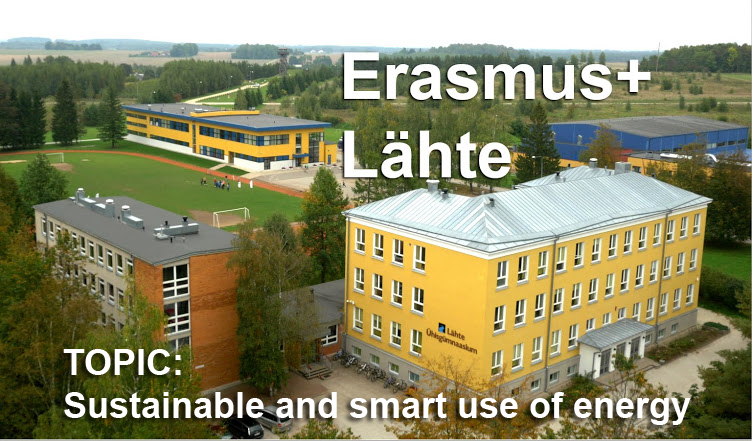Monday 8 October 2018
The Global Goals of 2030
The sustainable use of energy is one the global goals for 2030. Providing a sustainable energy source for more than 9 billion people is a monumental challenge. To meet this challenge, renewable energy sources need to be a larger portion of the energy mix. The world needs more to capitalize on clean and sustainable energy source. We need to become more in a biological way with the nature around us.
Smart and Sustanaible use of energy in Italy
Renewable energy has developed rapidly in Italy over the past decade and provided the country a means of diversifying from its historical dependency on imported fuels. The rapid growth in the deployment of solar, wind and bio energy in recent years lead Italy to produce over 40% of its electricity from renewable sources.
- Hydroelectric power is the leading renewable energy source in terms of production, Hydroelectric plants are especially widespread in the north, where there are many rivers and mountains.
- Solar power in Italy increased rapidly in the last ten years. The years 2009-2013 saw a boom in installed photo-voltaic and 2013's year-end capacity ranked third in the world, ahead of the United States at that time.
- Wind energy Italy has made good progresses bringing the total number of installed wind turbines over 6,730 and reaching a Capacity at the end of 2017 of 9.50 GW.
- Geothermal energy, we are proudly to be the first producer of this power in Europe.The total energy from Geothermal was 5.3 GWh. All the plants are in Tuscany in the provinces of Grosseto, Pisa and Siena which are considered province with 100% use of renewable energies and Siena has received the Title of Carbon free province.

Smart and Sustainable Use of energy in Germany
Germany holds the national record for renewable use of energy.
85% of all the electricity is being produced from renewables such as wind, solar, biomass and hydroelectric power. The proportions for electricity production are 13% for wind energy, 8% for biomass, 6% for solar energy, 3% for hydropower.
Our intention is to eliminate the use of nuclear power by 2022 and to decrease the CO2 emissions by 2050.
Some initiatives Germany has started are to reduce motor fossil fuels and to introduce more electric cars, to improve the conditions for bike riders and to introduce free public transport in cities,...
The nature of our energy system is changing from a system relying on centralised, large power stations to a decentralised structure with numerous smaller power generation systems.
Today we need storage solutions and smart power grids to deal with the excess energy produced during peaks in solar, wind, biomass and hydroelectric energy.
85% of all the electricity is being produced from renewables such as wind, solar, biomass and hydroelectric power. The proportions for electricity production are 13% for wind energy, 8% for biomass, 6% for solar energy, 3% for hydropower.
Our intention is to eliminate the use of nuclear power by 2022 and to decrease the CO2 emissions by 2050.
Some initiatives Germany has started are to reduce motor fossil fuels and to introduce more electric cars, to improve the conditions for bike riders and to introduce free public transport in cities,...
The nature of our energy system is changing from a system relying on centralised, large power stations to a decentralised structure with numerous smaller power generation systems.
Today we need storage solutions and smart power grids to deal with the excess energy produced during peaks in solar, wind, biomass and hydroelectric energy.
Smart and sustainable use of energy in Finland
In Finland the three biggest energy sources are firewood (25%), oil (23%) and nuclear power (18%). The smaller energy sources are for example hydro power, wind power and carbon. In 2014 38% of electricity production was made by renewable energy.
To reduce the use of fossil motor fuels for example we build new factories for renewable energy sources. To reduce the consumption of energy in Finland for example during the winter the temperature in public spaces is not raised to the summer heat, this temperature is considered to be "long sleeved shirt warmth".
The future development in energy usage in Finland is wind power. Hundreds of wind turbines are being planned in Finland at the moment. Also there are about 250 hydroelectric power plants in Finland, it makes 10-20% of energy.
Smart and Sustainable use of energy in Scotland
Scotland is on the forefront of renewable energy use having increasing switchng our energy use from burning fossil fuels to more greener alternatives. As of 2017 more than two thirds of Scottish electricity was derived from green schemes; a figure that is higher than most other countries in the world. The main source of this renewable energy is on-shore wind power; contributing to more than half of all the renewable energy supplied. The scottish Government have set the target of 100% of electricity to come from renewable sources by 2020.
ENERGY PRODUCTION, RENEWABLE ENERGY IN ESTONIA
The production of energy in Estonia is split into two: fossil fuels (exclusively shale oil) and renewable energy, which comprises of four different areas. The first being wind power, second biomasses, third being solar power and fourth hydropower energy. Shale oil and its extraction makes up a massive 90% of all energy produced in Estonia, and although it is in limited size, it will be a massive part of Estonia's energy production until it is eventually deprived in about 50 years. Out of all of the renewable energy sources, wind power makes up of 65% of all produced, and frankly, that is how it will stay, since the geographic positioning of Estonia and its actual opportunities for renewable energy in every other area are very limited, and would be wasteful to invest too much into it in this country.
Thursday 4 October 2018
Subscribe to:
Posts (Atom)














